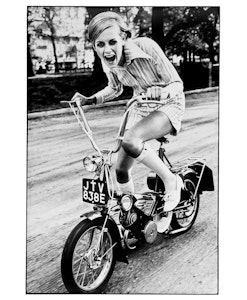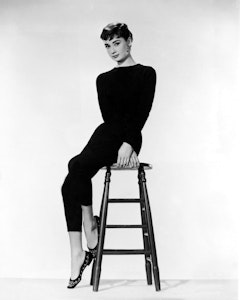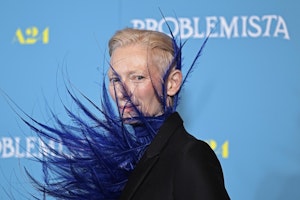This article is taken from the April 2025 issue of The Critic. To get the full magazine why not subscribe? Right now we’re offering five issues for just £10.
I caught Twiggy, Sadie Frost’s new documentary, the other day. Afterwards, I asked Twigs how much of her much-vaunted “iconic style” had been her own, given that her haircut was the decision of Leonard of Mayfair, who imposed a seven-hour crop and colour, whether she liked it or not (she dug it).
Everything else was her, she explained: her make-up inspired by her rag doll — ninety minutes to apply three pairs of false eyelashes, then paintbrush on “Twiggy lines” below the eye; her clothes from Barbara Hulanicki’s Biba.
It may not be a style anyone else wishes to emulate, but it is mine
I asked because the internet’s been going on about the impossibility of personal style in the age of The Algorithm again. Translation: we’re all fed the same stuff, then replicate it, becoming clones, while imagining we are dazzling originals.
Now, we mustn’t take the stuff these podcasting preeners say too seriously. My own best-worst fashion addiction — a drippy millennial ensemble all limply agreeing with each other — imagine themselves to be historians, while attributing every trend to “the Nineties”, which happens to be when they grew up.
Wearing black began in the Nineties, they maintain, curiously omitting Eighties Miyake minimalists, goths, beats, Johnny Cash, Coco Chanel, Queen Victoria, Anne Lister, Elizabeth I, the melancholy teen followers of the Earl of Essex, and Philip the Good of Burgundy.

Plimsolls sported with dresses first happened in, oh, the Nineties, they assert, somehow ignoring decades of sneaker-clad females right back to Keds becoming popular in 1916.
This lot are constantly fretting that style’s gone out of style, usurped by so many “cores”. You know, cores: flash-in-the-pan, social meeja-inspired, micro-trends such as mob wife, old money, coastal grandmother, Baddie, Renaissance core, dark academia, dad core, goblin core, and grunge ballerina aesthetic.
The V&A lists 44 entries under its (by no means comprehensive) core catalogue. In contrast, these anxious observers insist, trends used to be street-up, sociologically grounded, authentic expressions of cultural identity rather than fleeting “like it/buy it” impulses.
Up to a point, Lord Copper. One has only to attend the National Portrait Gallery’s Face exhibition to observe the way in which a pair of fashion bitches’ desire to photograph hot boys in armour circa 1998-ish could become a medieval trend (now known as “knight core”, obv).
In the Twiggy doc, one realises how briefly Twigs and this iconic guise graced magazine covers before being deemed over. Then, she and the world moved on, on to flowing-haired hippydom, disco divadom, shoulder pads …
Cores are merely same dynamic, different tech. Besides, it’s not as if our succession of mini-modes aren’t saying something. What they’re saying is: “This is late-stage capitalism, baby: nippers in the West buying an infinite amount of clobber made by nippers in the East. Until the system collapses, roles are reversed, the planet expires, and androids take charge.”

Any old how, regarding personal style, I have a couple of proposals, not radical, but neither much discussed. First, it should involve elements that are consistent over time; something discernible that sticks; a youness obvious to yourself and others. You see it, you know it.
My own look boasts aspects spanning the ages of 4, 14, 24, 34, 44 and 54, as I turn this spring. Viz: longish hair, black, grey, polo necks, a-line skirts an inch above the knee, opaque stockings, bows, block heels, boyishness, accessories obsession, pained demeanour. It may not be a style anyone else wishes to emulate, but it exists, it endures, and it is mine.
Second, for personal style to be recognisable, it demands a degree of clarity. It needs to be a clear, unclouded statement, visible from six paces. Style says something, it speaks. Drabness is invariably about an unhappy amalgam of gestures, melding together in an uncertain fog; insipid, wishy washy, unsure.

If brevity is the soul of lingerie, then clarity is the essence of what sits on top. I imagine this is what the young people refer to as “intentional” dressing. There should be thought, an idea, regardless of what said idea is.
Style requires boundaries, proportion — if chaos, then a cultivated chaos; if excess, then a degree of refusal to boot. The Italians are good at this idea thing. Individual-wise, we have the Hepburns, Katharine and Audrey, Tilda Swinton, Alexa Chung, Jarvis Cocker, His Majesty the King.
It’s more challenging to be a considered dresser in summer when there’s a lot less dressing, less layering, fewer clothes all round. However, spring is the perfect time to open one’s mind to it — open one’s mind and engage one’s brain.






